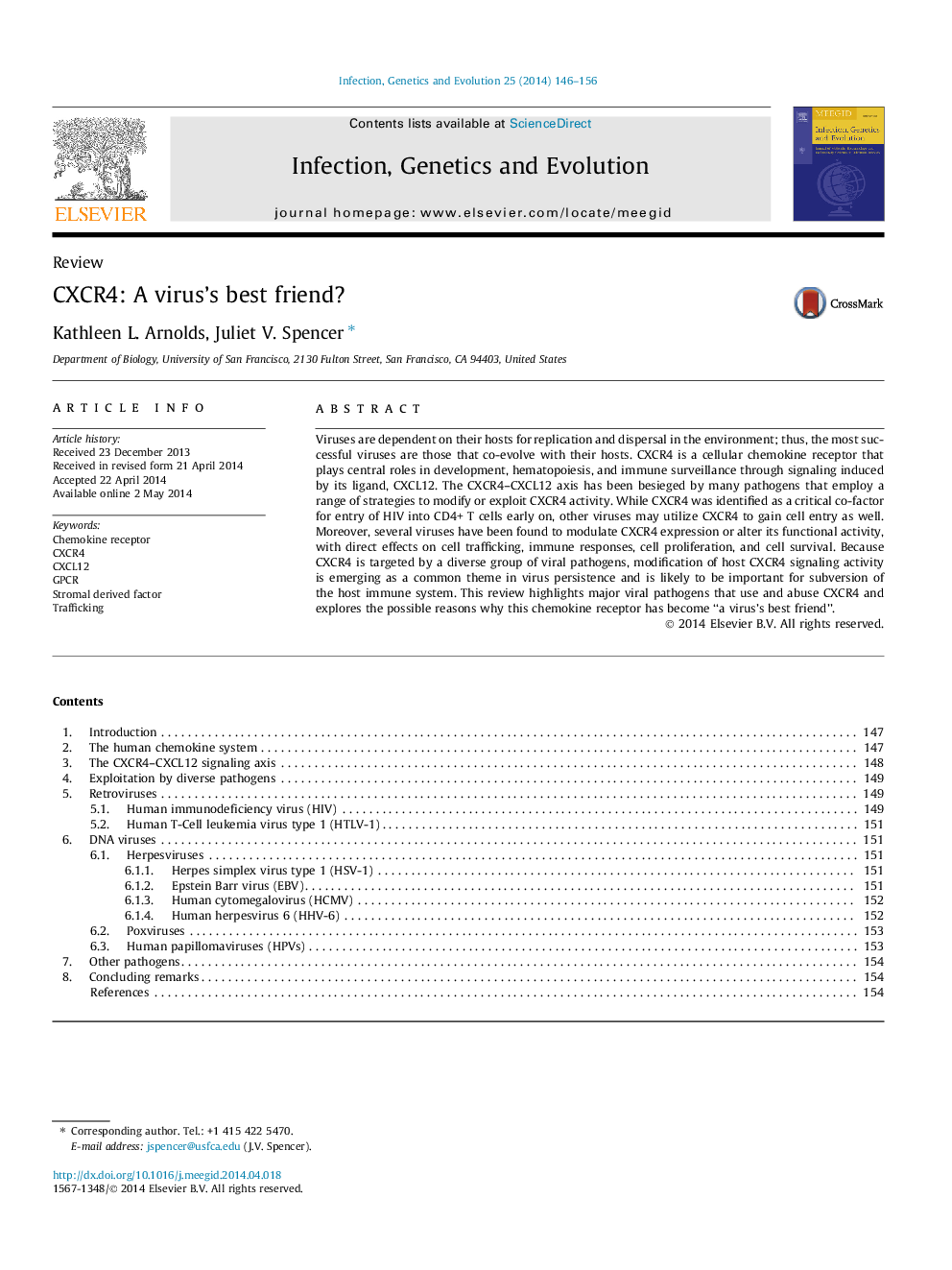| کد مقاله | کد نشریه | سال انتشار | مقاله انگلیسی | نسخه تمام متن |
|---|---|---|---|---|
| 5909266 | 1570178 | 2014 | 11 صفحه PDF | دانلود رایگان |

- The human chemokine system, its origins, and exploitation by viral pathogens are discussed.
- CXCR4 is likely a common target because it is highly conserved and critical for development.
- We discuss the implications of CXCR4 dysregulation by pathogens like HIV and herpesviruses.
Viruses are dependent on their hosts for replication and dispersal in the environment; thus, the most successful viruses are those that co-evolve with their hosts. CXCR4 is a cellular chemokine receptor that plays central roles in development, hematopoiesis, and immune surveillance through signaling induced by its ligand, CXCL12. The CXCR4-CXCL12 axis has been besieged by many pathogens that employ a range of strategies to modify or exploit CXCR4 activity. While CXCR4 was identified as a critical co-factor for entry of HIV into CD4+ T cells early on, other viruses may utilize CXCR4 to gain cell entry as well. Moreover, several viruses have been found to modulate CXCR4 expression or alter its functional activity, with direct effects on cell trafficking, immune responses, cell proliferation, and cell survival. Because CXCR4 is targeted by a diverse group of viral pathogens, modification of host CXCR4 signaling activity is emerging as a common theme in virus persistence and is likely to be important for subversion of the host immune system. This review highlights major viral pathogens that use and abuse CXCR4 and explores the possible reasons why this chemokine receptor has become “a virus's best friend”.
Journal: Infection, Genetics and Evolution - Volume 25, July 2014, Pages 146-156